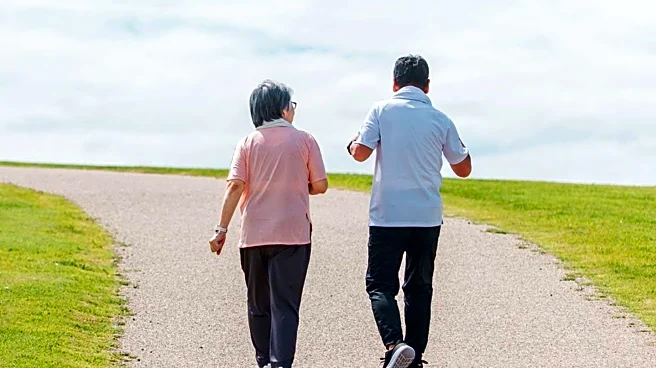What's Happening?
Jonathan Myers, PhD, a clinical professor at Stanford University, has emphasized the importance of simple fitness tests as indicators of longevity. These tests, such as balancing on one leg and measuring walking speed, are accessible and require minimal equipment. Research involving nearly 2,000 older adults found that those unable to balance on one leg for at least 10 seconds had a higher mortality rate over a decade. Additionally, walking speed has been identified as a strong predictor of survival, with slower speeds linked to shorter lifespans. These tests serve as surrogates for functional capabilities like balance and strength, which are crucial for longevity.
Why It's Important?
The significance of these tests lies in their ability to provide insights into aging and longevity without the need for expensive medical procedures. By focusing on balance and walking speed, individuals can assess their health and potentially improve their lifespan through simple exercises. This approach aligns with the growing trend of self-improvement and wellness, offering a practical method for individuals to monitor their health. The findings also highlight the importance of maintaining physical capabilities to prevent falls and disabilities, which are major contributors to mortality in older adults.
What's Next?
Individuals are encouraged to incorporate balance exercises into their daily routines, such as standing on one leg while performing everyday tasks. Strengthening exercises, particularly for the hip abductors, can enhance balance and reduce the risk of falls. As awareness of these simple tests grows, healthcare providers may increasingly recommend them as part of routine health assessments for older adults. This could lead to broader adoption of preventive measures aimed at improving longevity and reducing healthcare costs associated with age-related conditions.











